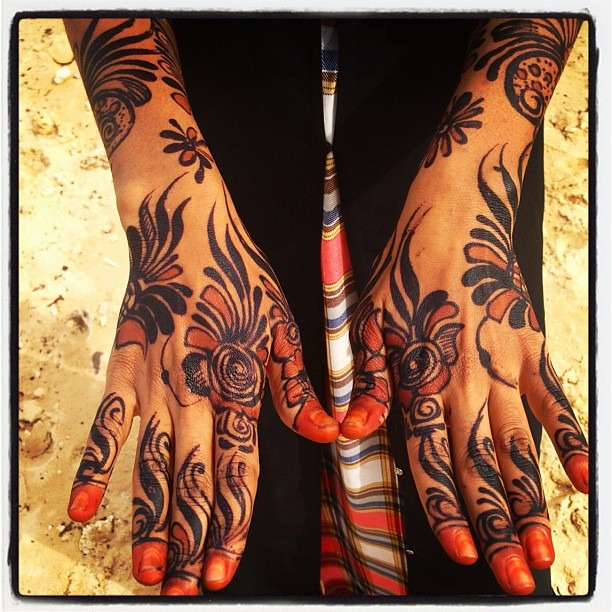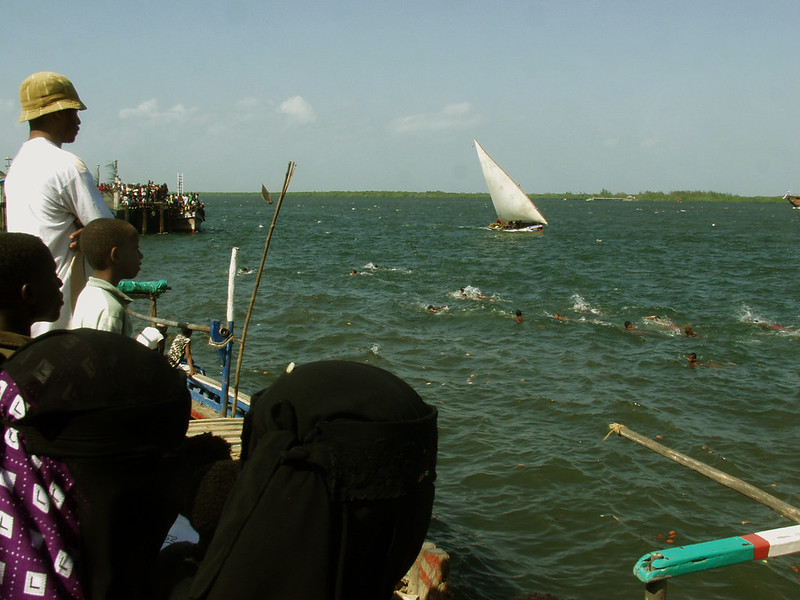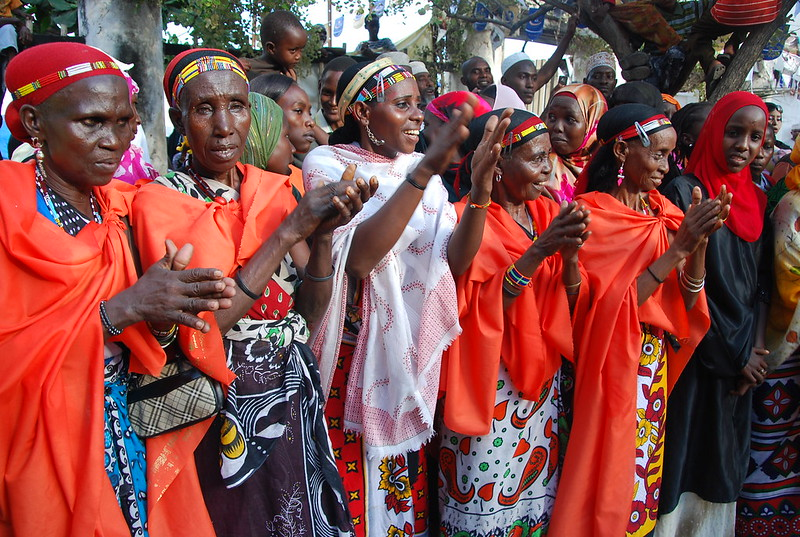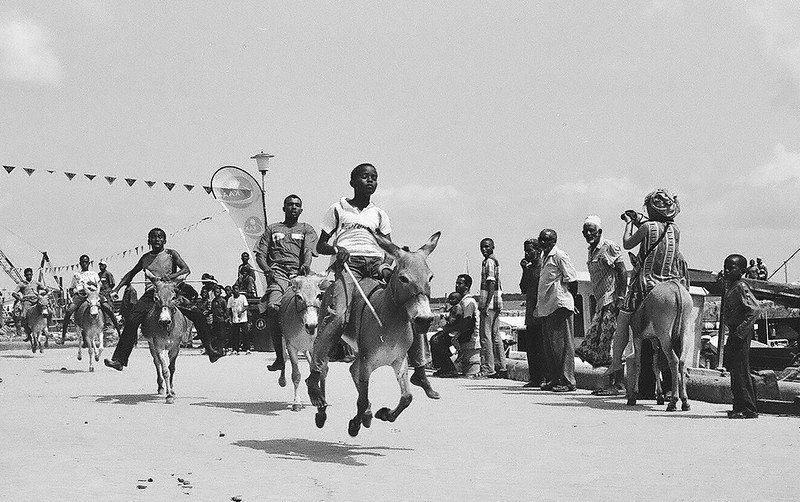Crowds gather on either side of the street, straining their necks to see the spectacle at the end of the road. The crowd is a mix of tourists and locals, western clothing woven in with people wearing traditional clothing. The men are dressed in ‘Shukas’ a long white gown that lightly grazes their ankles, and the women aredressed in ‘Bui Bui,’ also known as veils. There is a sense of excitement and anticipation in the air. Then suddenly, there are sounds of hooves hitting the street. The crowd watches as riders on donkeys come thundering down the road, the riders’ faces scrunched up in determination. The crowd cheers on their favorites, some of those cheers turning to groans when they see their favorites falling behind. No matter who won the race, however, the Donkey race is a staple activity of the Lamu Cultural Festival and an example of how Lamu’s culture and traditions have prevailed.
So where exactly is Lamu? What is the Lamu Cultural Festival you ask? Well, keep on reading to find out more.
Lamu is an island off the shore of Kenya and is around 500 miles from Mombassa. Lamu is part of the Lamu Archipelago which consists of the islands Lamu, Pate, Manda, Kiwayu, and Manda Toto. Lamu Island is one of the larger Islands and Lamu Town on Lamu Island is one of Kenya’s oldest continually inhabited towns and also considered one of the earliest Swahili settlements. Lamu Old Town was declared a World Heritage Site in 2001. Lamu Old Town hosts the Lamu Cultural Festival and is a reflection of a 700-year history, with its architecture and culture showing Swahili, European, Asian, and Persian influence. Most of the town has narrow streets, while the buildings are mostly built from magnificent stone. According to UNESCO, “This labyrinth street pattern has its origins in Arab traditions of land distribution and urban development. It is also defined by clusters of dwellings divided into a number of small wards (mitaa).” Lamu is majority Muslim and is a cradle of Islamic and Swahili Civilization. It has been an attraction for many scholars in Islamic and Swahili Culture since the 19th century.
Lamu’s rich culture and preservation of traditional Swahili life is the essence of the Lamu Cultural Festival. It is held every year in November and is a three-day affair. It attracts people from far and beyond for a chance to take part in activities that date back centuries. Activities such as traditional henna painting, poetry, traditional dancing, Dhow sailing, Competitive Boa games, and donkey races are popular.
Henna Painting
Henna designs are a big part of Swahili culture. The Henna is a mix of water, powdered leaf, and juice from unripe lemons. Women from Lamu often paint beautiful swirling patterns on their hands and feet with a fine twig. It takes about 5-6 applications for the Henna to set. Henna is a staple in the Lamu Cultural Festival.

Photo Credit: Margot Kiser:Flickr Photos
Dhow Sailing
Dhow Sailing is one of the highlights of the Cultural Festival. Dhow boats are one of the main ways people get around. These ancient boats stretch back into Lamu’s history and culture. Dhow boats have been used for fishing for centuries, their slanting triangular sails are a familiar sight in the water. Dhow Sailing racing rules in the Cultural Festival are simple. The first Dhow that crosses the finish line wins. Yet, it takes years of skill and determination to win the race. The best Dhows take part in the race, putting the sailers skills to the test as they have to weave around buoys to win.

Photo Credit:Rodrigo: Flickr Photos
Traditional Music &Dance
Taarab music is popular in Tanzania and Kenya and will more often be performed by women throughout the whole day. Men often perform ‘Kirumbizi‘, a dance in which they use long heavy sticks. ‘ Hanzua’ (sword dance) are also popular dances performed by the men. Poetry is a vital way to keep the oral story of the Swahili alive. Swahili Poetry is called ‘Ushairi‘, and most often will be performed during the festival.

Photo Credit: USAID: Flickr Photos
Donkey Race
Donkeys are the primary way people get around in Lamu, as the narrow streets make it very difficult for cars. The Donkey race is one of the most anticipated parts of the Cultural Festival. Donkey riders train for almost a year in preparation for the Festival.

Photo Credit: Xiaojun Deng:Flickr Photos
These are only some of the activities that take place during the Cultural Festival. The cultural festival showcases traditional craft and embroidery. In addition, Boa which is considered one of the oldest board games is played competitively during the day. Food is another vital aspect of the cultural festival. Traditional foods such as ‘Kiamati‘, which are crispy dumplings made from flour and dipped in sweet sugary syrup, and ‘Viazi Karai‘ a popular snack made from deep-fried potato and seasoned with a blend of spices, give a glimpse into the everyday food and culture of Lamu.
Lamu Cultural Festival is a celebration of its people, its traditions, and its food. It is a chance for the diversity of the Archipelago to be put on full display. Lamu Cultural Festival is a blend of embracing the future and keeping traditions alive.
Powered by WPeMatico


